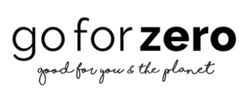Your Cart is Empty
**FREE (PLASTIC-FREE) SHIPPING OVER $89 IN AU | $9.95 FOR AU ORDERS BELOW $89**
Menu
-
- BRANDS
- New
-
A - F
- Aleph Beauty
- Amavasya Healing Store
- Baby Quoddle
- Banksia Pods
- Bare and Boho
- Bear & Kind
- Bearded Chap
- Beauty and the Bees
- Bee Green Wraps
- BioTuff
- Brightberry
- Buchi Brew Co
- Byron Bay Detox
- Chubby Bee
- Coconut Bowls
- Core Skincare
- Desert Shadow
- Downunder Wash Co
- Earth Greetings
- Eco Coconut
- Eco Art & Crafts
- Eco Max
- Eco Modern Essentials
- Eco Toothbrush
- Ecyo
- Eden Health Foods
- Ethique
- Ever Circle
- Ever Eco
- E.sup
- Femme Organic
-
G - N
- Gentle Habits
- Go for Zero
- Goodeau
- Good Change Store
- Good Cuppa
- Green Grip
- Haakaa
- Here and After
- Honeybee Wraps
- Honeysticks
- Ilo Wellness
- IME
- Jack n' Jill
- Jonny
- Kayu & Co
- Kelpy Bone
- Kiin Baby
- Kooshoo
- Laminated Cotton Shop
- Left-handesign
- Love Beauty Foods
- Magic Earth
- Mika Creations
- Miod
- My Mimi
- Natural Rubber Soother
- Natural Wonders
- No Nasties
- Noosa Basics
- Notely
- Nuebar
- Nutra Organics
- Nurtur Tea
- O - S
-
T - Z
- Tappwater
- That Red House Soapberries
- The Australian Natural Soap Company
- The Fabric Comb
- The Glitter Tribe
- The Keeper
- The Loose Tea Company
- The Naturool Co
- The Physic Garden
- The Swag
- The Tooth Faerie
- Thrive Tallow
- Togo Sun
- TOMbag
- TOM Organics
- Tooletries
- Urban Composter
- Urban Greens
- Urthly Organics
- Veggie Saver
- Viva La Body
- We Might Be Tiny
- Willelaine
- Winki Zinc
- Woohoo
- Wotnot
- ZeroCare
- Zone Yoga
- ✨ 15% off Eco Travel
- 🎄 Christmas Gifts
- SKINCARE & MAKEUP
- BATHROOM
- HOME
- FAMILY
- Zero Waste packs & Gifting
- BLOG
- ABOUT US
- SALE
-
- Login / Subscribe
-
Australia (AUD $)

**FREE (PLASTIC-FREE) SHIPPING OVER $89 IN AU | $9.95 FOR AU ORDERS BELOW $89**

War on Waste Returns: Episode 1 Deep Dive & Summary...
July 28, 2023 5 min read 1 Comment
War on Waste Returns: Episode 1 Deep Dive & Summary...
War on Waste is back!
Yes, we are super excited as it is about to answer some big questions like...
How come we produce so much waste and recycle so little? Why are we wasting more food than ever before? Why are our fashion habits wasting so many valuable resources? With all the plastic we consume and throw away, how much is ending up inside us? What is the effect on animals and the environment? How can governments and businesses do more? And most important, how can we reduce our waste?
It has been six years since the last War on Waste episode, and Australia has taken some steps forward but also backwards. Let’s dive in!
First, the good news. We can do something about it! It is not about drastic changes, it is about saying no to plastic daily.

1. The Plastic waste fact
On average, an Australian throws out 100 kg of plastic waste annually, meaning, as a country, we dispose of a staggering 2.6 million tonnes of plastic waste each year (equivalent to the weight of 16,000 jumbo jets). This trend makes achieving the national plastic recycling target of 80% by 2030 challenging.
How can we reduce this? Let’s start at home...
2. The Soft Plastics Saga
For the past six years, we were all counting on the return scheme for soft plastics called REDcycle. Australians were dropping off over 5 million pieces of soft plastic a day. Up until June 2022, soft plastics truly got recycled.
You may have heard the news about a fire at its leading recycling partner (Close the Loop) in Victoria that brought the whole scheme down?
Right now, 12,000 tonnes of soft plastics collected through the major supermarkets are stockpiled around Australia. Four hundred tonnes will be sent to landfills because it is degraded so much, it is unsuitable for recycling. The hope is that the majority will still be recycled…
The EPA has ordered the major supermarkets to take responsibility for this waste. It will cost over $8 million to transport and dispose of (a significant fire safety concern), so the options are to take it/find processing facially or dump it into landfills. The collapse of RedCycle highlights the complexity of recycling in Australia.
Remember, scrunchable plastic (soft plastics) does not go in the recycle bin - if there are no local solutions available, it has to go in your landfill bin.
3. Sorting Household Recycling
South Australia has built a $25 million facility to sort our household recycling that separates our recycling bin waste into 12 different groups: 3 types of paper and cardboard, five types of plastic, two types of metals, glass and then landfills.
Before the recycling is sorted, contaminants (like soft plastics, polystyrene, shredded paper, …) are taken out by hand.
Here are some tips to remember...
- If it is smaller than a credit card (like bottle tops), it will fall through the screens.
- Bottle tops: if the bottle is empty, you can leave the lids on the bottle, and it will go through to the plastics recycling. Please also check with your local council.
- Clean: your containers, like peanut butter, need a quick rinse; it does not need to be pristine.
- No gas bottles: they are highly pressurised items and are dangerous for staff
- Pizza boxes: you can recycle them! A little bit of pizza on it does no harm. Just don’t leave chunks in it. Eat it.
- No big metal pieces: they will break the machines
- How are plastics separated from paper? Both go on the conveyer belt. Heavy items (like plastic) fall into one compartment, while light objects (like paper) are blown up in the air by an air jet and gets blown into a separate compartment (away from the plastic)
- How are plastics sorted? An optical sorter (machine) identifies the types of plastic and separates them. For example, soft drink bottles are made of PET, milk bottles are made of HDPE,…
The triangles stamped on the plastic bottles are not a recycling symbol but a plastic identification code...
- 1 = PET: this is one of the more valuable recyclable materials, but it needs to be a clear plastic. Clear bottles turn back into recycled clear bottles. This means a green plastic bottle will not get recycled! So first, the coloured bottles must be separated from the clear bottles.
- 3 = PVC: the Cottee's Cordial bottle is one of the only ones in the household waste bin made from PVC. This is a lousy contaminant because it can’t turn back into food-grade material (it has chlorides, yikes). Craig emailed them, so we’ll probably hear more from this in the next episodes.
- Tetra packs: these have a bit of paper, a bit of plastic, and a bit of aluminium. Right now, it does not get recycled in Australia. We used to send these overseas before the ban. But pls, check with your local council too.
- 5 = polypropylene: yogurt packaging, ice cream containers,.… will often end up in landfills, but this SA facility does recycle it. Again here, we’d advise you to check your local council.
Some good news here! The ban on sending our Waste overseas has had a great effect because it pushed us to make better quality products & invest locally. It has forced positive action.
A lot of our waste and recycling problems start at the design phase.This is why we are different. While we have our recycling program for anyone to use, we give you a voucher to try out products that are designed without plastic waste.
4. Recycling hubs & hard-to-recycle items:
- Hard-to-recycle products can be recycled through TerraCycle. Read more here. Companies like Colgate pay TerraCycle to recycle their toothpaste tubes as they cannot go into the regular recycling bin. We know of many recycling hubs like us. You can find more here.
- Blister packs (aluminium attached to PVC) are the most common hard-to-recycle items. Australian pharmaceutical companies make about $11 billion in profit annually, but don’t take responsibility for their Waste. We need a national recycling scheme for blister packs because we have the facilities to recycle blister packs in Australia.
- Find your hubs here: TerraCycle, bread tags for wheelchairs, bottle tops, blister packs.
5. Container Deposit Scheme Success
- The NSW recycler receives 4 - 5 million bottles a day. These are all being recycled. More than 8 billion containers have been returned since the launch of the container deposit scheme.
- These schemes reduce litter and produce valuable recyclable materials. The bottles are shredded and made into new bottles between 6 - 8 weeks (bottle-to-bottle outcome) Labels and lids are removed at the facility. The lids get recycled too.
- Aluminium is the most valuable material. It is highly recyclable, and it only takes 10% of the energy to recycle as it does to create new aluminium. This is circular recycling at its best!
6. The Perils of Micro-plastics
Microplastics, invisible to the naked eye, pose severe threats to the environment and human health. These tiny particles originate from clothing, carpets, and more, leading to ingestion and infiltration into our bodies and ecosystems.
‘We covered the globe with microplastics now.’
Here's where things got even more interesting... Craig (the host of War on Waste) did a poo sample to see if he had microplastics and showed 30 fragments of microplastic. Research has found microplastics in the muscle tissue of sharks, assuming it is in our human muscle tissue too.
How toxic are microplastics? It can cause inflations of the lungs and affect bugs in our guts… these are subtle effects. We are still finding out what effect it has on our bodies. One of the primary sources of microplastics is clothing...
This leads us to Episode 2 Food Waste
We hope you loved the summary of the show. We'll pop it into your inbox every Friday and hope you learn something every week ❤️. Tune in next Friday!
1 Response
Leave a comment
Comments will be approved before showing up.
Recent Articles
- NSW Takes a Big Step Toward a Low Waste Future with New Plastics Plan November 28, 2025
- Eat, Return, Repeat: Meet RePlay, New Zealand's Deli Container Solution November 21, 2025
- From Blister Packs to Planet Wins: Pharmacycle Hits 100 Million Recycled November 13, 2025
- Holy Carp! A Plastic-Free Soy Sauce Fish Changing Sushi for Good November 07, 2025
- Greenwashing Under Pressure: Coca-Cola Called Out for Misleading Recycling Labels October 30, 2025
Subscribe
Sign up to get the latest on sales, new releases and more …


Liz Lysh
August 06, 2023
What would we do without Craig and his team? Why the government isn’t more involved I don’t know. Keep up the great work. I love your show, but what a shame we have to reminders like yours.
Best wishes from waste warrior Liz (68 now, I’ve been campaigning for years, and my kids are great with recycling etc…. So proud)